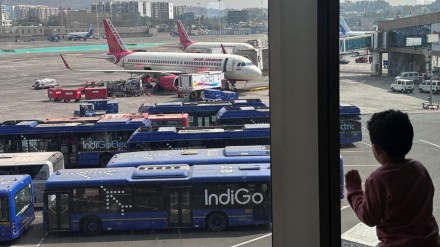Due to grueling duty, consecutive late-night flights, and non-stop schedules, Indian pilots are facing significant exhaustion during lengthy working hours today. Despite this, Indian airlines are pushing to resist DGCA’s new norms which aim to provide longer breaks and reduce cockpit crew work hours.
Concerned about increased expenses and operational constraints, the domestic carriers are looking to postpone the implementation of these rules. However, such resistance is shortsighted.
What are the norms?
On January 8, the Directorate General of Civil Aviation (DGCA) revamped its Flight Duty Time Limitations (FDTL) regulations, which aim to ensure that pilots are in good shape before operating a flight.
The latest rules provide additional rest to pilots, revise night duty regulations, and direct airlines to submit pilot fatigue reports. The Indian aviation regulator also mandated airline operators to comply with the new rules by June 1, 2024.
The need for revised FDTL norms
India’s aviation sector must swiftly embrace these regulations, recognising the safety and working conditions of pilots and cabin crew to benefit business and attract more customers. While adjusting to tighter work hours may initially pose difficulties it has long-term advantages.
One of the major additions in the new regulations is extending weekly rest periods to 48 hours from 36 hours. It will allow adequate fatigue recovery for the flight control crew. Maximum flight times have also been reduced, and the definition of night duty has been expanded.
Now, the midnight period would be considered till 6 am as opposed to 5 am under the previous regulations.
On the other hand, the Federation of Indian Airlines, representing major carriers like Air India, IndiGo, SpiceJet Ltd., and Vistara, argues that these regulations are excessively strict, estimating a need for 25% more pilots and warning of potential flight cancellations.
Why is India implementing new flying norms?
There’s precedence for national aviation authorities to implement stricter regulations than global standards, as seen in Taiwan following the tragic accidents at TransAsia Airways Corp.
Notably, the absence of safety measures in one instance resulted in a fatal accident, highlighting the importance of timely action. While concerns about costs and operational disruptions are valid, airlines must prioritise passenger safety and confidence.
India’s aviation sector is soaring high with new domestic air travelers. In December 2023, domestic traffic hit a new high catering to 13.8 million passengers on more than 91,000 flights for the month.
Annual figures are expected to increase 15% this year as the recovery from Covid and the growing flying class continues to spur, making these new regulations more vital than before.
